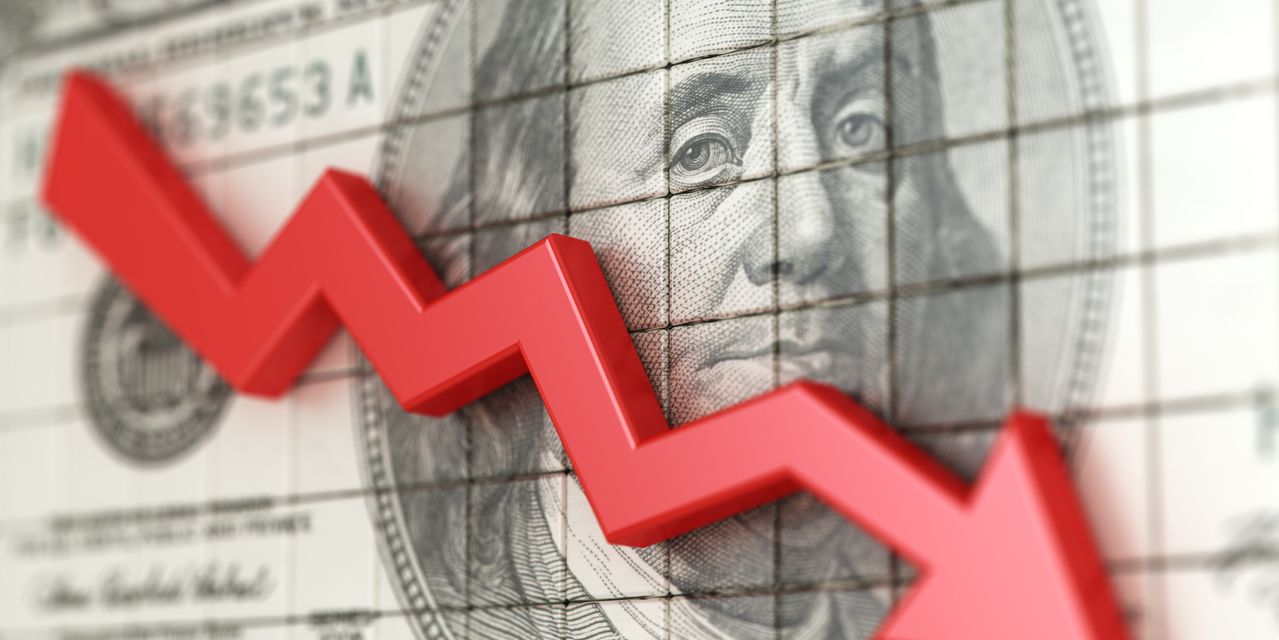There’s still too much bullishness on Wall Street, even after the Dow Jones Industrial Average’s
DJIA,
500+ point drop Wednesday following the Federal Reserve’s latest meeting and rate hike.
Consider all the attention given to a possible “double bottom.” By framing the market’s weakness in this way, the bulls are trying to put a positive spin on the market’s decline — which has already sliced 12% off the S&P 500
SPX,
since the mid-August highs and 15% off the Nasdaq Composite
COMP,
A double bottom occurs when the market forms an initial low, rallies for a while, subsequently falls back to that initial low but doesn’t fall significantly lower, and then begins a major new leg up. It would of course be good news if the market were to follow this script. But there’s no way of knowing in advance.
The comments about double bottoms made by Robert Edwards and John Magee, authors of the Bible on technical analysis entitled “Technical Analysis of Stock Trends,” are telling. They write that double bottoms (along with double tops, the bull market functional equivalent) are “referred to by name perhaps more often than any other chart pattern by traders who possess a smattering of technical ‘lingo’ but little organized knowledge of technical facts…. [True] Double Bottoms are exceedingly rare… And the true patterns can seldom be positively detected until prices have gone quite a long way from them. They can never be foretold, or identified as soon as they occur, from chart data alone.”
Given this, the recent surge of attention to double bottoms suggests we’re still early in progressing through the five stages of bear market grief that I have discussed before — Denial, Anger, Bargaining, Depression, and Acceptance. Celebrating a market decline as setting up a bullish double-bottom formation indicates that we’re no further than the “Bargaining” stage — with Depression and Acceptance still to come.
Bottom-fishing
As Edwards and Magee point out, the chart formation alone is of little help foretelling whether the market’s second wave down will end at the same level as the lows of its initial decline. But are there non-chart factors that provide us with valuable straws in the wind? To gain insight, I reached out to Hayes Martin (president of the advisory firm Market Extremes) and David Aronson (a statistician who has authored several books on how to base your investment decisions on a sound statistical foundation, including Evidence-Based Technical Analysis).
On the one hand, both told me, the factors that indicate a healthy or sick market are the same today as at any other time. For example, an extreme in bearish sentiment is a good indication that a decline may soon give way to at least some sort of rally, regardless of when it may occur. Martin says that while there currently is a significant amount of bearishness among investors and advisers, he wouldn’t expect a major low until there is a “further spike in negative sentiment.”
This dovetails with my column earlier this week on the absence of investor capitulation — the widespread despair that leads investors to throw in the towel and swear off of equities altogether.
On the other hand, Aronson added, there are factors to be on the lookout for which are unique to the market’s descent to the area of its first low. For example, during that second descent it would be bullish if significant divergences emerge in the behavior of various market sectors and market averages. This would occur if only some sectors and averages dipped below their initial lows but others remained well-above.
As of now, Martin says, only a “modest” amount of such divergences have developed. Coupled with the absence of a spike in negative sentiment, it would be premature to predict that the market’s decline will end in the vicinity of its June lows.
Things could change in coming days, as market conditions are shifting rapidly. If significant divergences do emerge, coupled with a spike in negative sentiment, “the bottom will be all the more powerful,” according to Martin. In the meantime, don’t jump the gun.
Mark Hulbert is a regular contributor to MarketWatch. His Hulbert Ratings tracks investment newsletters that pay a flat fee to be audited. He can be reached at [email protected]
More: Stock buyers are still too bullish for the bear market to end
Plus: Ray Dalio says stocks, bonds have further to fall, sees U.S. recession arriving in 2023 or 2024
